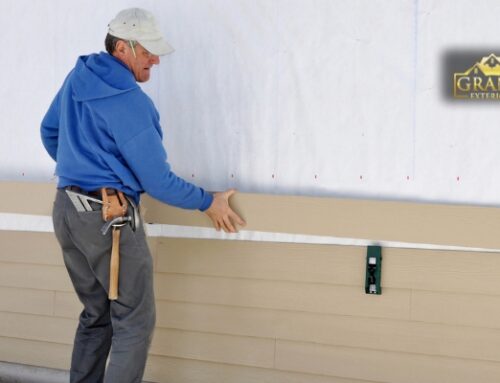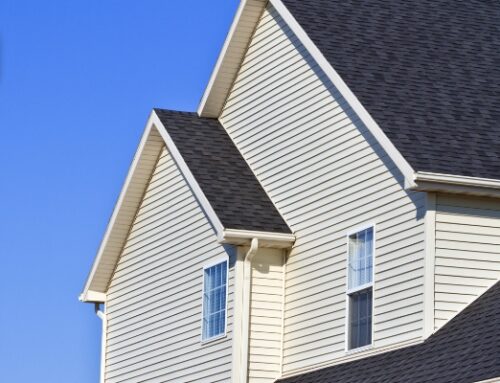Siding is a barrier between the outside and your home. It is used to guard you against temperature, wind, and moisture. All these factors may lead to the deterioration, abrasion, and destruction of your siding over time, resulting in energy wastage and a loss of curb appeal. In this case, you have to change the siding so that it can serve you well. The following guide is a necessary resource that you need to be aware of when it comes to siding replacement.
Signs You Need to Replace Your Siding
Being able to identify the initial signs of a failing siding can save you. You will prevent the penalties of having to repair significant amounts of structural damage and paying expensive repair bills.
- Visible cracks or warping
- Faded or peeling color
- Rot or mold growth
- Blisters or bubbles
- Increased energy bills
- Interior wall damage
- Pest infestation
- Frequent maintenance or repairs
- Loose or missing panels
- Outdated appearance
Types of Siding Materials
Having siding in your home has a significant benefit because of the role it plays. Because it helps protect your house and enhance curb appeal, you must choose one with the right material. There are different types, with the most common of them discussed below.
Vinyl Siding
Vinyl is one of the most popular siding options chosen by owners due to its low cost and ease of installation.
Pros:
- Low maintenance
- Cost-effective
- Broad color and fashion palette
- Pest and moisture resistant
Cons:
- Can crack in severe weather conditions
- Not easily pained
- May wear away with time due to sunlight exposure
Fiber Cement Siding
Fiber cement is a compound material composed of cement, sand, and cellulose fibers. It has a reputation for being strong and flexible.
Pros:
- Very strong and resistant to weather elements
- Fire-resistant
- Provides a beautiful, wooden-like look
- Rot and insect resistant
Cons:
- Dense as compared to other materials
- More expensive installation cost
- Silica dust during cutting requires a professional to handle it during cutting
Wood Siding
Old or historical houses are usually made of wood siding, which gives the house a natural and old-fashioned appearance.
Pros:
- Nature, nature beauty, nature aesthetic
- Stained or painted to any color quickly
- Responsibly grown, ecologically friendly
Cons:
- Always needs to be painted, sealed
- Subject to mould, bugs, and dampness
- Maintenance of long-run costs increased
Engineered wood siding
Engineered wood is a manufactured product that resembles real wood but is more durable.
Pros:
- It is cheaper than natural wood
- Rot and pest resistant
- Fiber cement is easier to install than cement concrete
Cons:
- Needs periodic maintenance
- Does not last as long as fiber cement
- Prone to wetness when improperly installed
Aluminum or Steel Metal Siding
Metal siding is appealing to many homeowners.
Pros:
- Very strong and resistant to fire
- Low maintenance
- Environmentally friendly
Cons:
- Easily dented and scratched
- May wear out or rub off with time
- Loud in the rain or a hailstorm
Other Options: Stucco
These are siding options with special characteristics that add architectural flair. Examples are stucco, brick veneer, and stone.
Pros:
- An excellent insulator when used properly
- Durable and pest-resistant
- Suitable for warm and dry weather conditions
Cons:
- It does not suit rain or damp places
- Fissures may occur after a long duration of time
- The installation is labor-intensive and expensive to acquire.
Siding Replacement Process
For optimal results, siding replacement should follow a strict process. This process will ensure the activity’s success.
1. Initial Inspection and Assessment
An expert will begin with a view of your home’s exterior to establish the state of the existing siding. This is to identify damage, evidence of water, or structural issues. Depending on their findings, they will advise whether a partial fix is necessary or the full replacement to make it durable and energy efficient.
2. Selecting the Right Siding Material
The material that is used as siding will be selected based on your own budget, climatic conditions, and personal taste. Options are vinyl, fiber cement, wood, and engineered material. They are different in terms of the required maintenance, curb appeal, and life span. The contractor will guide in choosing the best material for our home
3. Removing Old Siding
The second phase is the removal of the old siding with caution to avoid any damage to the inner structure. Proper disposal in compliance with local regulations is also a part of the process. The removal of the siding gives one some insight into whether the wall behind it is healthy or not. It also enables one to identify any problems that are not openly visible, including rotting or mold, which needs to be dealt with.
4. Preparing the Wall Surface
Before the installation process starts, the walls that are now exposed must be prepared. This should involve the repair of damaged sheathing, gap sealing, and ensuring that the wall is flat and firm. In some instances, applying a moisture barrier or house wrap may be done. As a result, your home will be safe from drafts and water penetration.
5. Installation Process (Flashing, Insulation, Panels)
The installation will start by flashing the windows and doors to avoid leakage. Also, it is possible to put some additional insulation layer or a foam board to achieve even higher energy efficiency. The panels of the siding are installed in an orderly manner and should be straightened and mounted. Details at this level affect the looks as well as the performance over time.
6. Clean-Up and Final Inspection
Once installed successfully, the site is cleaned, and the rubbles are cleared. The last check is done to see whether the whole siding has been installed properly, sealed, and aligned. The contractor will have to verify customer satisfaction and give them maintenance tips in order to extend the life of the new siding system.
Benefits of Siding Replacement
- Curb appeal
- Better energy efficiency
- Increased value of the home
- More protection against the elements
- Less maintenance requirements
Conclusion
Siding is a valuable investment, which increases protection, efficiency, and aesthetics of your house. The choice of materials and the annual maintenance process are all essential for the protection of property. To receive professional advice, expert installation, and lasting value, contact Grand Exteriors today and book your professional siding consultation with confidence.




